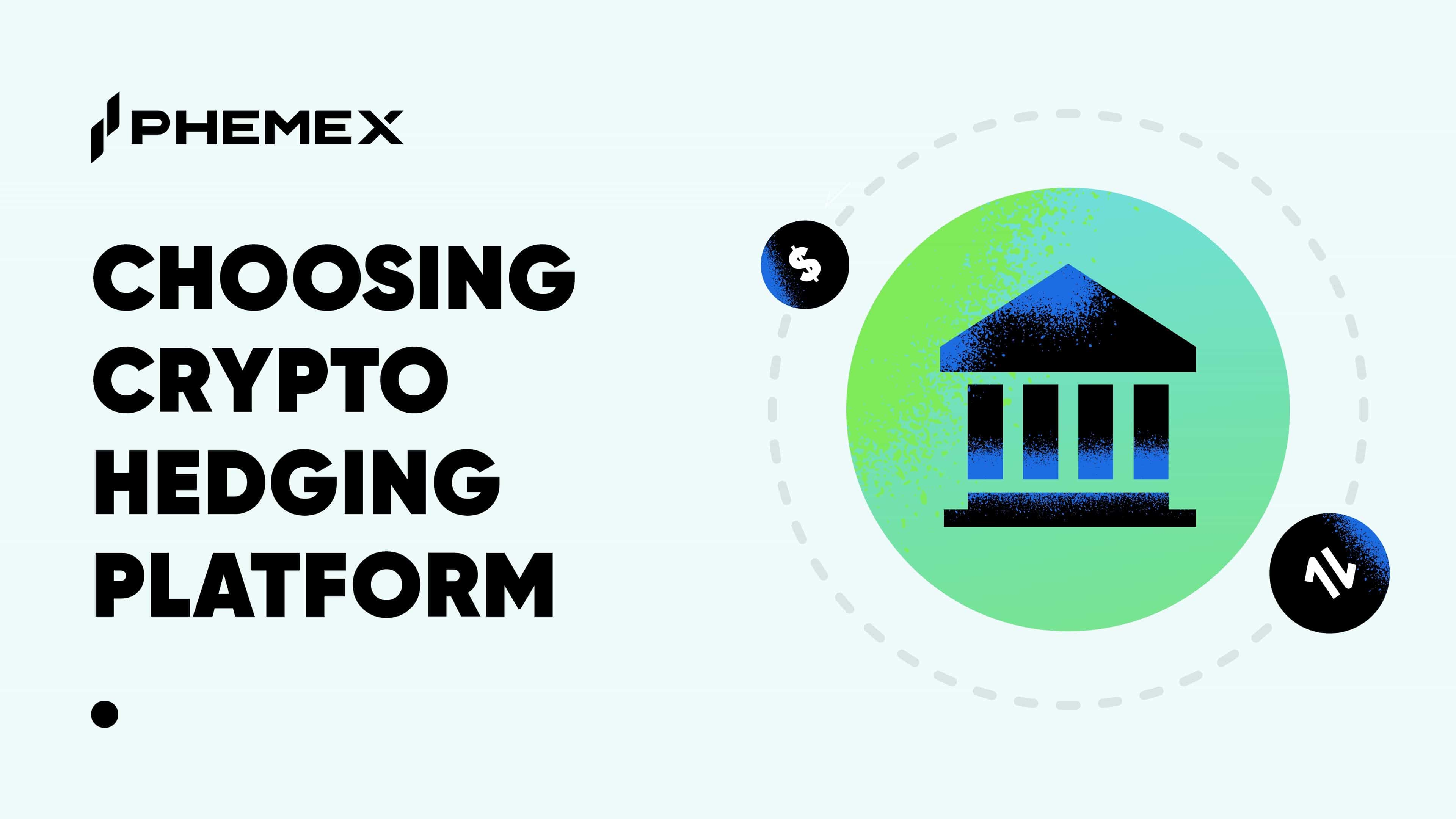Summary:
- A crypto winter is akin to the bear market in the stocks–this is when prices fall far below the peak and market sentiment is one of fear and pessimism.
- This crypto winter is a little different from others, as it is caused more by the uncertainty and grim outlook in the global financial markets rather than a specific crypto-related event, as was the case in the past.
- At the same time, crypto winters offer some of the best buying opportunities, because traders can DCA into the bottom and maximize their ROI for the next bull run–provided they do proper research.
Right after Bitcoin hit an all-time high of $67,000 in November 2021, the sentiment in the crypto industry turned bearish over the past year as Bitcoin began its descent to $18,000 in June 2022, representing a decrease in value of over 70%. Altcoins were even more affected, many losing 80% to 90%, as the total crypto market cap fell from a peak of $3 trillion down to less than $1 trillion.

What is crypto winter and how to recognize it?
A crypto winter is triggered by a series of flash-crashes until prices stabilize somewhere far beneath its last peak. A crypto winter is akin to the bear market in the stocks–this is when prices fall far below the peak and market sentiment is one of fear and pessimism. When crypto winter descends, it is difficult to time the bottom because the support levels keep breaking. Those who bought the dip at $45,000, $35,000, and $20,000 will find that there are yet lower dips to be bought. Other markers of a crypto winter: companies start laying off staff, and large players fall.
Are we in a crypto winter?
Presently, Bitcoin, Ethereum (ETH), Solana (SOL), Cardano (ADA), and most top-tier projects are down 70 to 90% from their all-time highs in 2021 at the time of writing. Overall, crypto market cap fell from a peak of $3 trillion in Nov 2021 down to less than $1 trillion at time of writing.
Companies like Coinbase, Crypto.com, Gemini and Blockfi have laid off staff. Terra and Three Arrow Capitals have led the first wave of collapse, with others like Celsius coming close to liquidations.
Are we in a crypto winter? It definitely looks to be one. But what’s causing it? It is critical to be aware of macro trends in the global economy that affect Bitcoin and the crypto market as a whole.

Is Crypto Winter 2022 different from winters past?
It’s important to note that this crypto winter is unlike the rest, in that the underlying factors are rather different.
While it’s difficult to pinpoint with full certainty the direct causes, most of the previous three or four previous winters/bear markets can be traced to crypto-specific events. The first-ever Bitcoin Winter back in 2012, for example, was triggered when TradeHill, then the second largest Bitcoin Exchange, had a regulatory shutdown, after which another exchange was hacked, taking Bitcoin’s price from $7 to about $4.20. That winter last about six months.
The last dip occurred during the Covid crash of 2020, when Bitcoin flash-crashed from $10,000 down to $4,900. Altcoins crashed simultaneously. Despite that, it didn’t take long for the crypto market to recover. This time, the recovery will not be so fast.
This is because the root cause of this crypto winter is not the crypto market itself, but rather the macro-economic landscape. As more institutional investor dollars pour into crypto, crypto has grown in its correlation with the stock markets, reaching 0.49 in March 2022–the highest since October 2020 according to data by Arcane Research. And because these big investors are treating crypto like stocks, what affects the stocks will affect crypto too.
In a bid to temper the fastest inflation growth in US in 40 years–8.6% on a YoY basis–the US Federal Reserve is embarking on a series of interest rate hikes. This increase in the cost of money has a negative effect on the stock markets, as the increased interest payments companies have to pay will eat into profit margins, affecting stock value. Already, the NYSE, S&P 500, and NASDAQ are down 20 to 25% in the last six months; tech stocks have been hit harder, with Tesla down 35% and Amazon down 36%.
During the entire length of the last cycle, “buy the dip” was the catchphrase–and many times it turned out profitable for those who did so. When Bitcoin flash-crashed from $60,000 down to $29,000 in 2021, people who bought the dip doubled their profits on the next peak in November.
Historical analysis has always shown that bear market prices have always stabilized at half the cycle’s peak. For example, during the 2018-2020 bear market, the price remained in a clear trend-line of $10,000 which was half of the cycle’s peak of $20,000. In this cycle, the peak was at $69,000, which means that Bitcoin’s bottom in this bear cycle was supposed to stabilize in the $20,000-30,000 range. At the time of writing, Bitcoin is currently trading sub-$20,000.
Is it possible that Bitcoin could drop to lower levels than $20,000? We can’t rule that out. But those who know the real underlying factors behind this crypto winter will be able to tune out the noise and instead focus on the right things to do.
Five ways to prepare for the next bull run
Even as crypto winter sets in, there are actions a smart trader can take to prepare for the next bull run, because eventually the crypto market will recover. Whether that happens in a few months, a year or several years, nobody knows for sure, but as they say–prepare, don’t predict.
DYOR on crypto projects
For retail investors, a crypto winter presents buying opportunities. A decrease in trading activity leads to a decrease in prices. Investors who purchase during a crypto winter and hold through until the next bull run tend to see the highest ROI based on historic patterns–if they pick the right coins. And in order to pick the right coins, it is critical to do your own research (DYOR) to assess key aspects including:
- Does the coin have a clear use case or is its price buoyed by hype and influencer shilling?
- Who are the people behind the coin–do they have credibility? Are they known publicly?
- Do they have a working product? If not, when is that expected? And are there updates on their blog/Twitter/website?
- If the product has been launched, is it being adopted? Who are some of their industry partners?
- Competition analysis–how does the project compete against others in a similar market?
- Are there any controversies about the project, trade-offs or criticism?
All these questions are especially important if you are going for small-cap coins i.e. those under $1 billion in market cap, because these will be most vulnerable to market shocks and crashes. At the same time, high risks, high returns–if the fundamentals of a coin are strong, it will likely survive the crypto winter and if they do, it will deliver much higher returns than large-cap coins.
While most analysts believe this winter will wipe out most altcoins, the industry as a whole has made significant progress in the last few years. The question to ask has shifted from “Will crypto survive?” to “Which cryptos will survive?”
The safer bets, on the other hand, are the top-10 cryptos by market cap. These are more established projects that have already been market-tested to a certain degree, with significant institutional backing and a strong community. These tend to be lower risk, lower return choices, but there are always exceptions. For example, positive development news such as Ethereum finally succeeding in moving to Proof-of-Stake could lead to bullish performance even during a crypto winter.
Among these large-cap coins, there is also the opportunity to maximize one’s potential gains, by analyzing the difference between the last peak and current prices. For example, Ethereum at $1,000 is only 5x away from its peak at $4,800, while Solana at $30 is nearly 8x from its peak at $250. Both projects have strong fundamentals, but Solana could provide higher returns due to its lower market cap.
Start DCA-ing
Winters provide some of the best buying opportunities, because traders can DCA into the bottom and maximize their ROI for the next bull run. From the 2020 Covid bottom to the 2021 all-time high, Bitcoin made a 13x ($4,900 > $69,000) and Ethereum made a 44x ($110 > $4,800).
Dollar-cost-averaging (DCA) is a proactive strategy that a trader can consider implementing especially during a crypto winter, when prices have fallen significantly from all-time-highs. Altcoins crash significantly harder than Bitcoin in winter, but they also provide a higher ROI during a bull run since their market cap is smaller and there is more room for growth. DCA-ing means buying at regular intervals no matter the price. The rationale behind DCA is to reduce the overall impact of volatility on a coin’s price and in turn, minimize our investment risk.
For example, if we’re DCA-ing into Bitcoin each month, we might invest $1,000 to buy BTC at $30,000 in May, $1,000 to buy BTC at $20,000 in June, and $1,000 to buy BTC at $15,000 in July.
In a perfect world, we will know that BTC will bottom at $15,000 and gone all in at that price, resulting in a maximum amount of Bitcoin bought. However, not even experienced traders could have predicted this perfectly, which is why DCA-ing is a wiser option–it lowers the average cost of our Bitcoin holdings and ensures that we still have cash to invest if prices drop even further. The crypto market sentiment will eventually shift from fear to greed, and it’s better to buy while the sentiment is fearful than buying at the top when the market is greedy.
By creating a Phemex account, a trader or investor can start accumulating Bitcoin at fixed intervals, for example, once every two weeks or once every month. Once the market turns bullish, he will be well-positioned to take profits.
Pro tip: Read this guide to learn about spot trading to get started with your DCA strategy.
Sharpen your trading skills
For beginners, a crypto winter is often a great time to get one’s feet wet in crypto trading, because the market is often trading sideways (albeit with the occasional flash crash) and therefore there is less FOMO i.e. you don’t have to worry too much about missing out on the action.
To practice your trading skills, first you’d want to familiarize yourself with a trading platform. Many crypto exchanges including Phemex offer a testnet for paper trading, which allows traders to simulate trading with real-time prices, but without real money. How to enter trades correctly? Am I prone to emotional trading? These are just some of the issues to settle before all the market activity resumes.
Next, take the time to understand trading indicators by checking out the technical analysis of the Phemex Academy. How to read price charts? What is a trading strategy and how to develop one? Learning to use technical indicators can help to minimize risk and maximize returns. A great place to start is to learn about moving averages, a beginner-friendly indicator widely used in trading.
HODL for the comeback
Waiting is a part of every successful investment strategy, and in crypto, that means to HODL. Historically, Bitcoin has rewarded everyone who bought the top and held. However, it has never bailed out those who panic sold.
For example, during the 2014 cycle peak, after Bitcoin reached $1,000, it crashed to $200. Those who sold at that level would later find themselves watching regretfully as Bitcoin exceeded the previous peak by 20x within the next four years.
On the other hand, traders who bought the 2017 top at $18,000 and HODLed through the brutal crypto winter of 2018 when BTC fell about 80% were rewarded handsomely when Bitcoin reached $69,000 in May 2021.

Touch grass
If you’re sitting on paper loss, sometimes all you can do is to step away from the screen. Trading can be exhausting, especially in a bear market. Mental health is a top priority for every smart trader, and staring at charts all day long can lead one to spiral into fear and gloom–one of the two emotions that trip up even the most experienced traders.
Instead, try completely detaching from the crypto world and stepping outside, traveling to a new destination, taking a road trip, meeting friends, and re-thinking everything.
In a new environment, introspection may come more easily. Did you fail to take profit during the last bull cycle and was that because of misplaced expectations or greed? Did you abandon your trading strategy and panic sell only to miss out on later gains? Everybody makes mistakes–but those who can turn these into learning experiences will always come back stronger.
Conclusion
Even though it’s impossible to predict when the next bullish cycle will start, it’s best to start preparing as early as possible and DCA-ing your way from winter to spring. Crypto always returns roaring and making new all-time highs–the last peak resulted in a $3 trillion market cap for the industry as a whole, bringing it one step closer to the market cap of blue-chip assets such as gold and silver.
This is one crypto winter that has been brought on more as a result of uncertainty in the global financial markets than any single crypto-specific event. However, just like bear markets happen in stocks, winters are nothing new to the crypto industry and large downturns have occurred every past cycle.
Read More
- The 2021 Crypto Crashes Explained: What do they Mean for the Future?
- May 2021 Crypto Market Analysis
- Buy Low, Sell High Crypto: 4 Things To Do (3 To Avoid)
- July Crypto Market Analysis
- How To Trade Crypto: The Ultimate Investing Guide
- December BTC Market Analysis
- November BTC Market Analysis
- Which Crypto to Buy Today for Long-term & Short-term?











